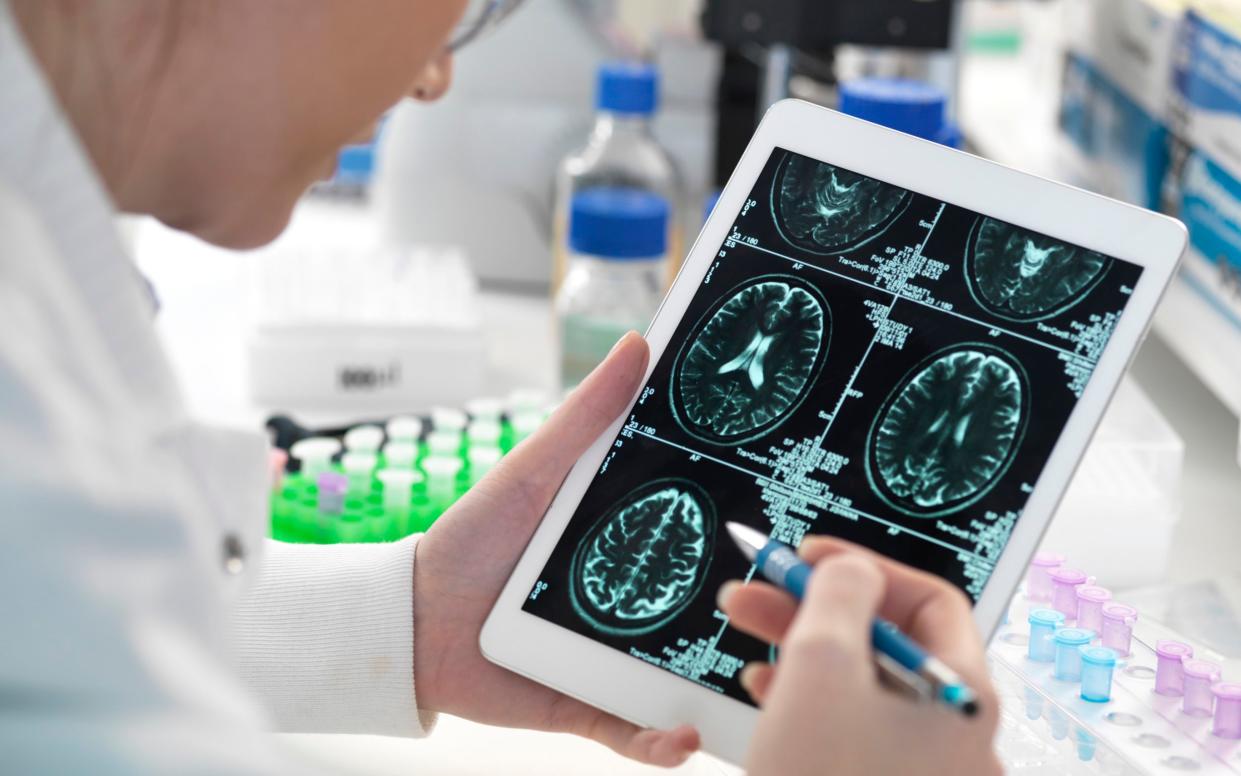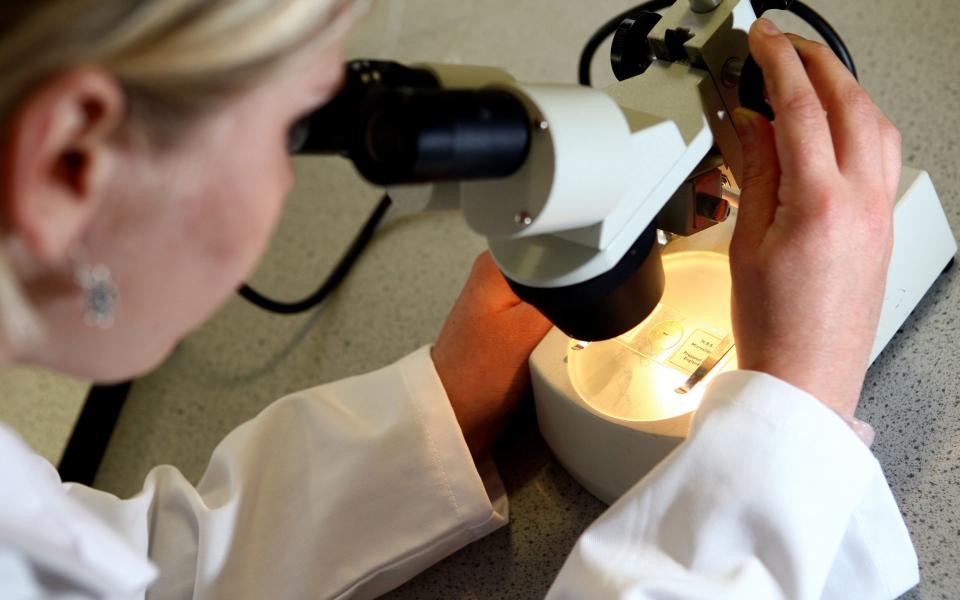The 1980s Alzheimer's scandal explained - so do we need to worry now?

The story was one of the biggest medical scandals of the second half of the 20th century.
Twenty years ago, neurologists first reported that 80 out of an estimated 1,848 children treated with human growth hormone injections between 1959 and 1985 to prevent short stature, went on to develop a rare but devastating form of dementia called Creutzfeldt-Jakob disease (CJD), later in life. CJD is driven by abnormally shaped proteins called prions which infect the brain before spreading rapidly, triggering other healthy proteins to change their shape and form toxic clumps, a process which results in progressive brain cell death.
Now, neurologists at the UCL Institute of Prion Diseases have published a new study in Nature Medicine, suggesting that five more children treated with growth hormone injections later developed early-onset Alzheimer’s between the ages of 38 and 55.
Peter Garrard, an honorary consultant neurologist at St George’s University Hospitals NHS Foundation Trust, told The Telegraph that he has treated one of these five patients.
“He presented with memory problems, and from a clinical point of view I didn’t have any hesitation in diagnosing him with Alzheimer’s disease,” says Garrard. “Over the three years since I first saw him, he has progressed in a relentless and unfortunate way, such that his cognitive deficits are no longer confined to memory. He requires help with significant amounts of daily life.”
So how did this scandal happen?
A now-banned procedure
It sounds archaic by modern standards, but for much of the 20th century the only means of producing growth hormone was to remove the pituitary glands from the brains of deceased individuals who had donated their bodies to medicine.
These hormone-producing glands are located at the base of the brain and doctors would often have to collect glands from many different brain samples to collect sufficient growth hormone to perform a procedure. This was then injected into children in the hope that it would boost their growth rate, until the use of human-derived growth hormone was eventually banned in 1985 after health risks started to become apparent.
Growth hormone injections are still used in some rare cases of children with severely restricted growth, but this is now entirely done using synthetic forms of the hormone.
“Now, all growth hormones are made in the laboratory so it’s entirely safe,” says Prof Jonathan Schott of the UCL Institute of Neurology. “It’s important to point out that this was an outdated legacy procedure from a moment in time.”
What are prions?
In the 80 cases of children who developed CJD, the growth hormone they received contained prions, which then progressed into their brains with slow but lethal consequences. At the time, doctors did not understand the full implications of prion contamination and the connection to CJD.
Since the 1980s, we have learnt that eating prion-contaminated meat can lead to a form of CJD known as mad cow disease. Research has also shown that cases of prion-induced disease can stem from human cannibalism. Papua New Guinea was afflicted by an epidemic neurodegenerative disease called kuru which was spread through prions ingested through consuming human flesh.
“After somebody had died, as a mark of respect there were feasts when the body and brain was eaten,” says Schott. “That again, has now stopped, but that was a way that prions were passed.”
What about these new five cases?
UCL neurologists are intrigued by the latest cases described in the Nature Medicine study, because they may represent a new mechanism by which Alzheimer’s disease can be transmitted.
The research team tracked down the original growth hormone samples injected into those five patients, which are still stored by the Department of Health, and found that rather than being contaminated with prions, they contained some very small seeds of misfolded or abnormally shaped beta amyloid proteins.

Large toxic clumps of beta amyloid have long been pinpointed as one of the tell-tale signs of Alzheimer’s disease. Schott and others suggest that the misfolded beta amyloid proteins may have behaved in a prion-like manner after they were injected into patients, spreading through the brain, and causing rapid damage.
“It was shown in the prion unit at UCL that if you took some of those seeds of beta amyloid and put them into mice, they could spread through the brain,” says Schott.
Should we be concerned?
Dementia researchers are keen to reassure the public that these new findings do not carry any health implications regarding procedures which are carried out today.
“We shouldn’t be worried about dementia passing between humans and we shouldn’t be worried about surgical procedures,” says Prof Tara Spires-Jones, a group leader in the UK Dementia Research Institute.
Schott points out that hospitals now have well-worked safety procedures in place to prevent any chance of possible prion contamination. “It’s not an infectious disease,” he says. “These were very, very tragic cases and this was a very unfortunate episode in time with some very peculiar circumstances. There’s lots of measures now in surgery and so forth to prevent the spread of prion disease and other things.”
Could it lead to new Alzheimer’s treatments?
Instead, Schott believes that the findings could help neurologists solve one of the biggest enduring mysteries of Alzheimer’s disease.
While Alzheimer’s is connected to the presence of misfolded beta amyloid and tau proteins, we still don’t know how the disease then develops and spreads within the brain, something which is vital to understanding how best to stop it.
If misfolded beta-amyloid proteins can indeed behave like prions, moving from protein to protein and inducing them to change their shape in a destructive pattern, it would go some way to explaining how Alzheimer’s progresses.
“Prions form various shapes which then have the capacity to replicate themselves and to spread,” says Schott. “One of the questions is whether beta amyloid takes on similar characteristics and that’s how it’s able to grow and spread throughout the brain.”
Not all dementia researchers, however, are convinced. Spires-Jones accepts that the five patients who developed early-onset Alzheimer’s, received seeds of beta-amyloid through a growth hormone injection and that these likely progressed into their brains.
However, she feels it is too much of a jump to suggest that these proteins must have behaved like prions, purely on the basis of rodent studies. She points out that many healthy people in mid to later life have been found to have a significant presence of misfolded beta amyloid in their brains, and yet do not have any symptoms of Alzheimer’s.
“Most of us have a bunch of misfolded amyloids in our brains, and we have no symptoms whatsoever,” she says. “Your brain can cope with that. To have Alzheimer’s, you have to have lots of amyloid and tau proteins, then the loss of neurons, and we don’t know how the latter happens.”
Schott though is hopeful that this will lead to more breakthroughs in terms of understanding the progression of Alzheimer’s in the future.
“I think this is going to be a very fruitful area of research moving forward, and that might open up new ideas about how we might be able to stop Alzheimer’s from spreading if it gets established,” he says.
Recommended
If you find out you’re at high risk of Alzheimer’s, what can you do?

